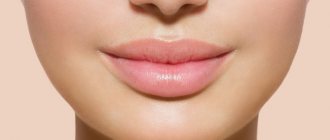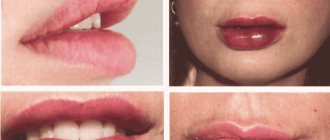Blepharoplasty is an operation aimed at eliminating age-related changes in the upper and lower eyelids or their congenital anomalies. With blepharoplasty, you can remove the overhang of the upper eyelid, swelling and bags under the eyes, correct asymmetry, make the eyes larger and change their shape. As a result, the look becomes more open, lighter, and the face is visually rejuvenated. Blepharoplasty is a fairly common procedure, it is low-traumatic and has a minimal risk of complications.
Rehabilitation after blepharoplasty
The operation is most often performed under local anesthesia. Additionally, the patient may undergo intravenous sedation; he will be in a sleepy state without feeling anxiety or fear. The procedure lasts 1-2 hours. After the patient comes to his senses, he is under the supervision of a doctor for some time. Depending on the clinic’s policy, the scope of the intervention, and the course of the postoperative period, you can go home a few hours after the procedure or spend the first day in the hospital.
Feelings after surgery
After blepharoplasty, the patient may experience the following symptoms:
- swelling, feeling of heaviness of the eyelids;
- pain in the intervention area;
- hematomas (usually under the lower eyelids);
- dry eyes or, on the contrary, lacrimation;
- diplopia (double vision), blurred vision.
Not all the symptoms from the list will necessarily be present; the appearance of some of them depends on the type of blepharoplasty, the patient’s skin type (swelling is more pronounced on oily skin than on dry skin), lifestyle, diet, compliance with all preoperative doctor’s recommendations and other factors. All these phenomena are reversible and disappear without a trace within a few days or by the end of the recovery period.
Contraindications
Contraindications to blepharoplasty:
- difficult to correct dry eye syndrome;
- increased intraocular pressure;
- diseases of the cardiovascular system;
- diabetes;
- blood clotting disorder;
- acute viral diseases;
- acute infectious diseases (respiratory diseases, sore throat, pneumonia, etc.).
- diseases of internal organs (liver, kidneys, circulatory and endocrine systems, blood);
- chronic diseases in the acute stage.
Rehabilitation period by day
1 day. The patient is discharged from the clinic after the operation. On this day, the eyes are most sensitive to light, so it is recommended to have dark glasses with you to put on before going outside. By evening, swelling increases. Possible lacrimation, dry eyes, blurred vision.
To reduce pain, your doctor may prescribe analgesics. Any medications (drops, ointments) should be used only as prescribed by a doctor. It is necessary to remain calm and avoid any strain on the eyes. You need to sleep on your back, with your head elevated, to improve the flow of fluid from the upper body and reduce swelling.
2-3 days. Painful sensations decrease, swelling, on the contrary, increases, reaching a maximum on the 3rd day. It is acceptable to use a cold compress on the eyes - apply an ice pack wrapped in several layers of clean, dry cloth to the operated area. There may be numbness and impaired sensitivity of the skin in the surgical area.
These days you can already wash your face and hair, trying not to wet the skin of your eyelids. As before, you should try not to strain your eyesight, devote a minimum of time to reading, watching TV, and working at the computer. The patient must continue to follow all the doctor’s prescriptions - drops, treatment of sutures if necessary.
3-5 days. Symptoms persist or improve slightly.
5-7 day . Usually on the 5th day a follow-up examination is scheduled in the clinic, the surgeon removes the sutures (if self-absorbable threads were not used). There may be redness and slight swelling in the area of the sutures.
7-10 days. Symptoms gradually decrease, and by day 10 the patient can return to normal life with some restrictions on eye strain. After 10-14 days you can wear contact lenses.
The final result of the operation can be assessed after 1-2 months. By this time, the epidermis of the skin of the eyelids is renewed, the seams become unnoticeable. After six months, postoperative scars are almost impossible to detect; they look like a thin strip in the crease of the upper eyelid or along the lower edge of the eyelashes.
If there are scars at the suture site
Sutures after surgery are visible only to a plastic surgeon, unless the skin is too thick or they come apart after the procedure.
Fortunately, this rarely happens, only among doctors at the beginning of their career growth. Visible scars are the result of an incorrectly performed procedure, a violation of the blepharoplasty technique, or non-compliance with the surgeon’s recommendations during the rehabilitation period.
In any case, visible seams cannot be left like this. Correction is carried out using hardware techniques. The following techniques will help remove residual scars:
- Mesotherapy. The procedure in the paraorbital area restores the condition of the skin. Mesotherapy refers to injection cosmetology. The procedure involves the introduction of medicinal and homeopathic drugs into the upper layers of the dermis and epidermis. Mesotherapy is not carried out earlier than two weeks after surgery. Enzymes introduced into the layers of the dermis dissolve the tissue. Then ultrasound treatment is carried out with low frequency currents. This effect allows nutrients to penetrate deeper into tissues and speed up the process of tissue repair.
- Laser resurfacing. This technology eliminates unevenness, restores skin color and reduces the level of visibility of the defect. Laser resurfacing does not completely eliminate the remaining scar. Laser eyelid resurfacing may cause redness in the treated area indefinitely. Also, the procedure has many contraindications (infections, pregnancy, dermatitis, psoriasis, diabetes, epilepsy, open wounds, acute inflammatory eye pathologies), so a consultation with a surgeon is required before the procedure. The minimum cost of 1 procedure is up to 4000 rubles.
- Fractional thermolysis. The procedure refers to the destruction of tissue under the influence of high temperatures. The essence comes down to the use of an erbium laser. A laser beam directed at the required area removes the old layer of the epidermis. New cells begin to appear in its place. The effectiveness of the procedure lasts for several years. Fractional thermolysis leads to skin resurfacing and regeneration, the protein sticks together. The result is a lifting effect.
The advantages of fractional thermolysis include:
- safety;
- delicacy;
- physiological;
- long-term preservation of the effect;
- painlessness.
To obtain a visible result, it is enough to carry out 4–6 sessions for the upper eyelids and 3 procedures for the lower skin.
Mesotherapy, laser resurfacing and fractional thermolysis do not require any specific preparation. The procedures are painless and no anesthetics are used.
Nuances of recovery for various types of blepharoplasty
After upper eyelid blepharoplasty, the recovery period is the fastest. Hematomas occur very rarely. Pain and swelling go away faster than with circumferential blepharoplasty and lower eyelid surgery.
Circumferential blepharoplasty and lower eyelid surgery require a slightly longer rehabilitation period, usually lasting up to 2-3 weeks. Swelling and pain are more pronounced, and bruises under the eyes may be present.
Transconjunctival blepharoplasty is performed through an incision on the inside of the eyelid. It is used only for the correction of lower eyelid defects. The least painful method with a quick recovery period, after which there are no scars.
Indications for blepharoplasty
Main indications for eyelid plastic surgery:
- loss of tone and elasticity of the skin of the eyelids;
- tired look (“heavy” eyelids);
- drooping skin of the upper eyelid (“drooping eyelid”, including congenital eyelid ptosis);
- drooping (ptosis) of the lower corners of the eyes, as a result of which their shape changes and the size of the eyes decreases;
- excess skin of the lower eyelids, wrinkles, hernias, folds of the lower eyelids.
An eyelid lift allows you to get rid of excess skin and fatty tissue in the eyelid area, reduce signs of age-related changes, eliminate congenital and acquired eyelid defects, and correct the muscles of the periorbital area.
Eyelid skin care after blepharoplasty
In the first days after surgery, an antiseptic patch is applied to the stitches. After 2-3 days it is removed. Sutures should be treated with any solutions only on the recommendation of the surgeon; this is not always required. As a rule, sutures are removed 5-7 days after surgery.
No special eyelid skin care is required after blepharoplasty. You need to follow normal hygiene rules, try not to cry or rub your eyes. You can use your usual cosmetics after the stitches are removed and the scars are completely healed. To quickly resolve scars, the doctor may recommend a special gel, but it is not recommended to use it without a prescription.
Removing stitches
On what day are stitches removed?
Sutures are removed 3–7 days after surgery. A patch is applied in their place for 3 days, and after 4 days everything is removed. The skin then heals on its own and is treated with special ointments or gels to speed up the healing of the sutures.
If the surgeon used self-absorbing sutures, they will not need to be removed. Such threads disappear on their own.
Is it painful to remove stitches after blepharoplasty?
According to patient reviews, the removal procedure is tolerable. If the person wishes, the area will be lubricated with an anesthetic before the threads are removed.
You cannot remove it yourself, pull out the stitches or massage the eyelids before removal.
After the threads are removed, scars form. The skin will be sensitive for approximately 7 days after removal. Soreness is a normal reaction of the body to the removal of a foreign object.
If necessary, the doctor will prescribe painkillers if the pain is unbearable.
Usually, suture removal is painless. Only some time after the procedure may the skin in the injured area be slightly pulled.
Recommendations to speed up rehabilitation
To quickly recover after blepharoplasty and achieve optimal surgical results, additional procedures are indicated:
- Massage of the skin around the eyes and eye gymnastics. They help improve blood circulation in the intervention area and strengthen the orbicularis oculi muscle. The surgeon who performed the operation will tell you when you can start these procedures, advise the correct massage technique, and show you exercises for the eyes.
- Physiotherapy. Microcurrent therapy is most often used, which normalizes lymph flow, eliminates swelling, and accelerates skin healing. Also shown are UHF and phonophoresis.
- Maintaining sufficient skin hydration. Cosmetic products should be used after scars have healed.
Effect of lymphatic drainage after liposculpture
- Tones the skin and muscles, improving blood and lymph circulation;
- Restores normal metabolism of nutrients in soft tissues;
- Improves the skin's ability to regenerate;
- Fights cellulite;
- Models slender and toned figure contours;
- Relieves swelling and bruising;
- Promotes rapid healing of cannula marks;
- Helps consolidate and improve the results of body contouring surgery.
After body liposculpture, a course of 5-8 procedures or more is recommended so that you can evaluate the result and return to an active life as soon as possible.
Restrictions after surgery
Most prohibitions are temporary and must be adhered to until the end of the rehabilitation period (from 1-2 weeks to 1-2 months).
After blepharoplasty you cannot:
- expose your eyes to bright light and sunlight;
- allow excessive visual strain;
- experience physical activity, including active sports;
- lift weights;
- visit the bathhouse, sauna, solarium;
- rub your eyes;
- wear contact lenses;
- sleep face down or without a pillow;
- apply decorative cosmetics;
- try to remove stitches and healing crusts yourself;
- eat spicy, salty foods, smoked foods;
- smoking and drinking alcohol.
Subsequently, it is necessary to constantly apply a cream with a high sun protection factor to the skin around the eyes. Minimally invasive cosmetic procedures (Botox, mesotherapy) are allowed 2-3 months after surgery.
Healing process
The healing process of sutures after blepharoplasty consists of several stages. The first period of wound healing occurs 2-7 days. At this time, it is necessary to fix the edges of the wound so that the fusion occurs as accurately as possible.
The second period is primary recovery, 2-4 weeks. During this time, the process of granulation occurs in the wound - new connective tissue of a rather bright pink color is formed. The patient should not be frightened or confused by the color, since granulation is only the second stage of healing. On the recommendation of a doctor, you can perform cosmetic procedures:
- lymphatic drainage;
- magnetic therapy;
- microcurrent therapy.
If during healing the patient notices that he is strongly pulling at the blepharoplasty sutures, then physical procedures are required. This will help get rid of unwanted consequences.
The third period is scarring. At this stage, ugly scars do not form. On the contrary, granulation tissue is replaced by epithelial tissue and the postoperative suture turns into a thin light pink strip, which is practically invisible in the natural crease of the eyelid. The duration of the third period is from 1 to 4 months. After this period, laser resurfacing of the seams and Botox injections can be performed. Laser resurfacing allows you to get rid of the cut line forever. Botox injections smooth out wrinkles that were not eliminated after eyelid surgery.
What blepharoplasty looks like: stitches, before and after photos.
Possible complications
Blepharoplasty is known as an intervention with a minimal percentage of complications. However, some unpleasant consequences are still possible. Among them:
- hemorrhage in the sclera of the eye;
- hyperreaction to light;
- severe and prolonged lacrimation;
- inflammatory processes in the suture area;
- inflammation of the conjunctiva
- eversion of the century.
Sometimes these phenomena go away on their own; in some cases, medication is required. If, a few days after the operation, cutting pain, redness of the conjunctiva, an increase in previously minor symptoms, hyperemia or suppuration of the sutures, or an increase in body temperature appear, you should urgently contact the clinic where the intervention was performed.
Choosing a clinic and doctor with a good reputation, positive reviews, as well as following all the doctor’s recommendations in the pre- and postoperative period will help minimize the risk of complications.
When can injections be given?
PRP therapy (plasmolifting)
Skin restoration after plastic surgery on the face is facilitated by PRP therapy (plasmolifting)
.
Swiss plasma lifting RegenLab
is today considered the “gold standard” and one of the world leaders in injection cosmetology. Facelift (surgical facelift) eliminates deep wrinkles and ptosis of the face, but in itself it does not affect the quality of the skin. PRP therapy (plasmolifting) saturates the skin with platelets, triggering at the cellular level the processes necessary for rejuvenation from the inside (stimulates the synthesis of its own collagen, elastin, hyaluronic acid).
Do plasma lifting
it is possible already
3-4 weeks
after plastic surgery, sometimes earlier - it depends on the specifics of the surgical intervention, the recommendations of the plastic surgeon and cosmetologist.
PRP therapy
works well with facial lipofilling
, as platelet-rich plasma improves cell survival.











